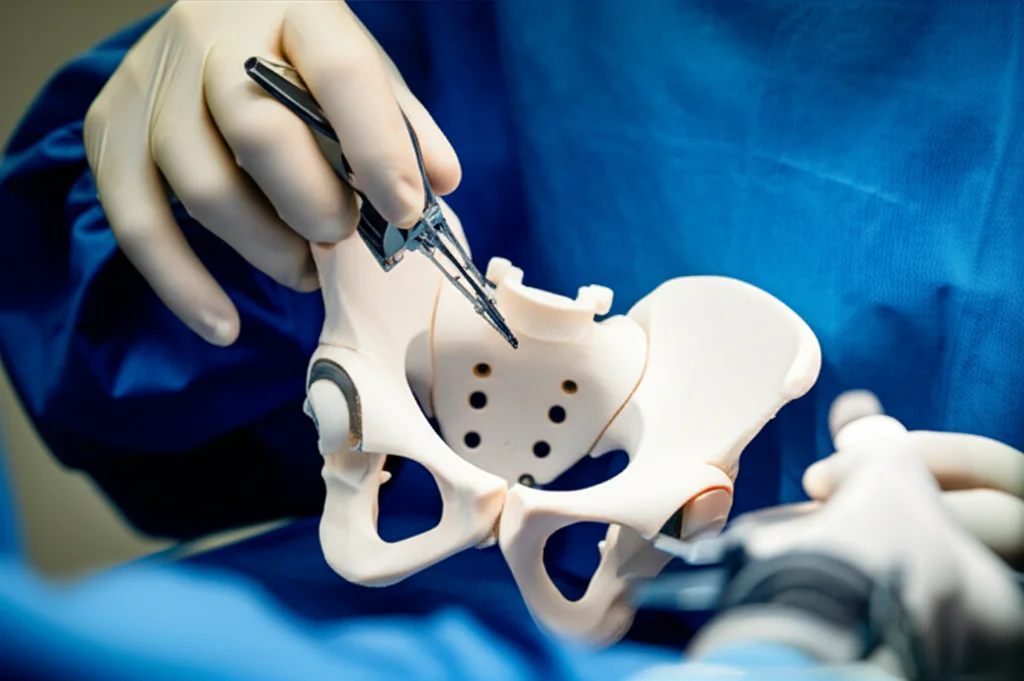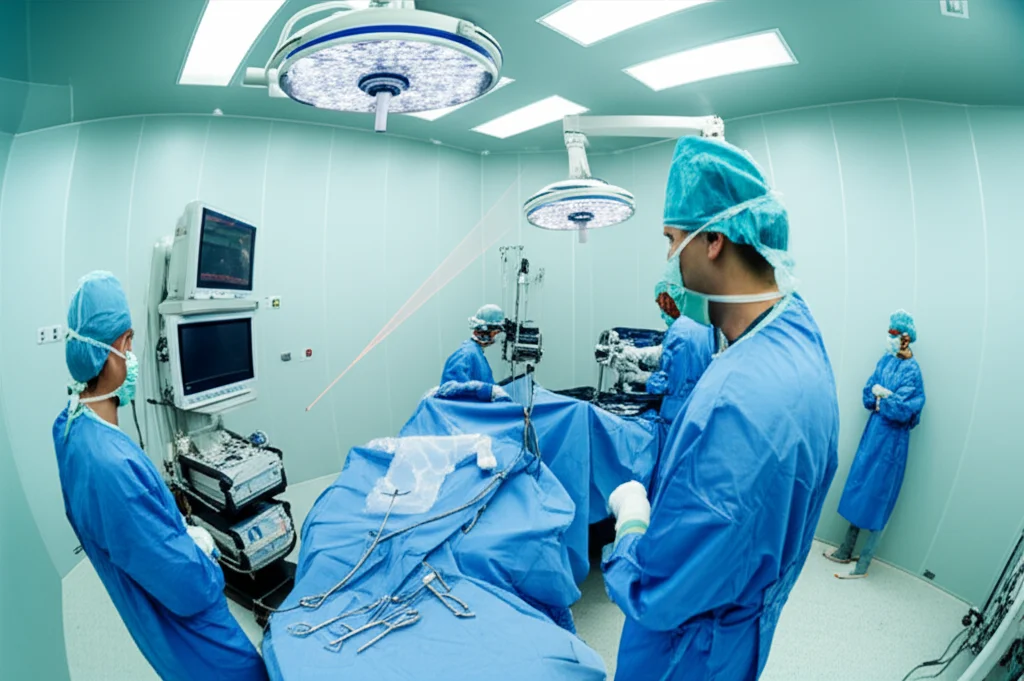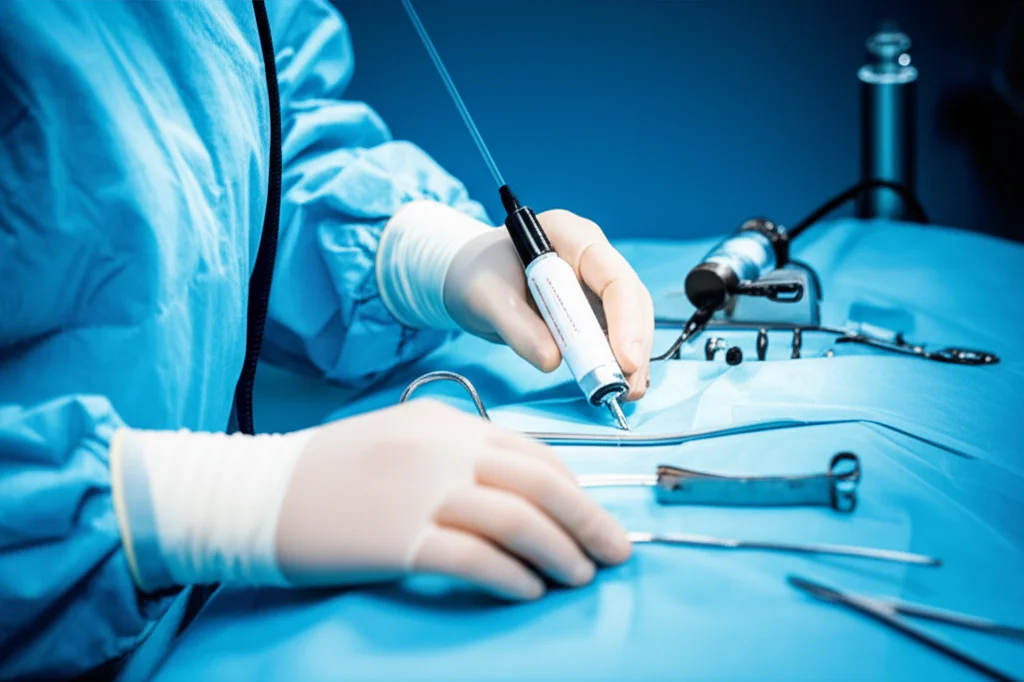Hip Replacement Goes High-Tech: Faster, Less Bloody Surgery?
Hey there! Let’s talk about something pretty cool happening in the world of hip replacements, specifically for folks getting a cementless total hip arthroplasty (THA) through that direct anterior approach (DAA). If you’ve ever thought about this surgery, or just find medical tech fascinating, stick around!
Getting a hip implant positioned *just right* is absolutely crucial. I mean, it’s the difference between a happy, mobile joint and potential headaches down the road like dislocation, limited movement, or even needing another surgery way too soon. Traditionally, surgeons relied on 2D X-rays for planning. It’s the standard, sure, but let’s be honest, trying to figure out a complex 3D joint from a flat picture has its limits. It can make predicting the exact implant size tricky, sometimes leading to issues like the stem being too small (which can cause it to sink) or too big (risk of fracture).
Stepping Up to 3D and PSI
This is where the cool tech comes in! Imagine planning your surgery not just on a flat image, but with a full 3D reconstruction of your hip based on a CT scan. This allows for much greater accuracy in selecting the right implant size and getting the alignment spot on.
Even better, there’s something called Patient-Specific Instrumentation (PSI). Think of these as custom-made guides, often 3D-printed, designed specifically for *your* anatomy. They’re used during the surgery to help make super precise cuts, like the one on the femoral neck, and guide the placement of the socket (the acetabular cup). Using these guides, especially compared to just “freehanding” it, can really nail that accuracy, sometimes getting cuts within a tiny margin of error.
Now, placing that acetabular cup is notoriously tricky. It’s one of the most variable parts of the surgery. We’ve had benchmarks like the Lewinnek safe zone, but research shows that even if the cup is technically in that zone, complications like dislocation can still happen. This is why thinking about *patient-specific* safe zones, considering things like how your spine and pelvis move together, is becoming more important.
Other technologies like augmented reality, computer navigation, and even lasers are being explored to boost cup placement accuracy. Some of these, like robotics or navigation systems, can add time and cost to the procedure. But PSI, especially when combined with 3D planning and maybe a little laser help, aims to give you that accuracy boost without necessarily dragging out the surgery.
Why Efficiency Matters
Reducing the time spent in the operating room and minimizing blood loss are big deals in THA. Shorter surgeries can mean lower risks of infection, blood clots, and issues related to anesthesia. Less blood loss means less chance you’ll need a blood transfusion afterwards, which can have its own set of complications and might keep you in the hospital longer.
So, the folks behind this study wanted to see if using PSI with 3D planning and technological assistance (like a laser guide) could make things more efficient – specifically looking at operating time and blood loss – compared to the conventional 2D planning method for cementless THA via the DAA.
They looked back at data from two groups of 100 patients each who had surgery at the same hospital. One group had the conventional 2D planning, and the other had the 3D CT-based planning with PSI guides and a laser guidance system for the cup. All patients had the same type of cementless stem and ceramic-on-ceramic components, and the surgeries were done by experienced surgeons using the DAA.

The Results Are In!
And guess what they found? The group that got the high-tech treatment with PSI and 3D planning had significantly shorter operating times and less blood loss!
The average operating time in the conventional group was about 45.7 minutes, while the PSI group averaged a neat 31.9 minutes. That’s a reduction of over 10 minutes! When they looked at the median times (which can be a better measure when there are some longer outliers), the PSI group was still faster, averaging 31 minutes compared to 40 minutes in the conventional group. That difference was statistically significant (pelt; 0.001), meaning it wasn’t just random chance.
Blood loss also saw a significant reduction. The conventional group lost an average of 407 mL, while the PSI group lost 319 mL. Again, this difference was statistically significant (pelt; 0.017). The median blood loss was 300 mL for PSI versus 325 mL for conventional.
Why the Improvement?
The study authors suggest that the improved planning accuracy from 3D imaging and the precision offered by the custom PSI guides really streamline the procedure. With better pre-surgical knowledge and tools designed for the specific patient, surgeons might need to make fewer adjustments during the operation. They can feel more confident about implant positioning, reducing the need to constantly check multiple anatomical landmarks or make compromises. The laser guide used for acetabular positioning in the PSI group might have also played a role in speeding things up, as it simplifies checking pelvic orientation compared to traditional methods.
Interestingly, this study’s findings on time and blood loss differ from some previous research. Some studies looking at PSI (though perhaps using different approaches or specific technologies) didn’t find a significant difference in operative time or blood loss, and a few even reported slightly longer times or more blood loss with PSI. The authors here think the combination of DAA (which experienced surgeons often find faster) and the specific laser guidance system used might explain why their results showed such a clear efficiency gain.

Beyond the Numbers
So, what does this mean? Well, besides potentially lower risks for the patient due to shorter surgery time and less blood loss, there’s also the potential for cost savings. One study estimated operating room costs at $36-$37 per minute. If you save 10 minutes per surgery, that adds up pretty quickly – potentially hundreds of dollars per patient!
It really highlights the value of these advanced planning technologies and tools in making THA via the DAA not just more accurate, but also more efficient and potentially safer.
Keeping It Real: Limitations
Now, no study is perfect, and the authors point out a few things to keep in mind:
- It was a retrospective study, meaning they looked back at existing data, although the data itself was collected prospectively.
- They only looked at one specific type of femoral stem (straight, quadrangular, fully coated). Results might differ with other implant designs.
- While the tech helps, surgical time can still vary based on the patient’s specific anatomy, weight, and how stiff their hip is.
- They estimated blood loss based on suction volume, which might not capture the *total* blood loss (like what soaks into sponges or tissues). They also didn’t routinely measure postoperative hemoglobin.
- Getting the 3D planning requires a CT scan, which means a bit more radiation exposure and added cost compared to standard X-rays. More studies are needed to really figure out the cost-benefit here.
Despite these limitations, the findings are pretty compelling. The significant reduction in both operating time and blood loss, coupled with improved consistency in surgical time (shown by the smaller standard deviation in the PSI group), really suggests that PSI and the tech used in this study offer tangible benefits for cementless THA via the DAA. It seems that better planning and guided execution lead to a smoother, faster, and less bloody procedure.
Source: Springer







